My gardens are slowing down in preparation for winter, but haven’t experience the frosty nip that was promised earlier in the week. Thank goodness! I’m not quite ready to give in to the dark season. Not Just Yet.
Focusing on mid-November foliage, I’m joining with Pam at Digging for Foliage Follow-Up.
In one corner of my garden with dappled light most of the day and some direct sun off and on, are a couple of favorite foliage vignettes. One such is of Iris straps, Blue Mistflower, Conoclinium coelestinum, and cobalt-blue containerized succulent Ghost Plant, Graptopetalum paraguayense.
Planted alongside that mix are several Dianella or Variegated Flax Lily, Dianella tasmanica ‘Variegata’. 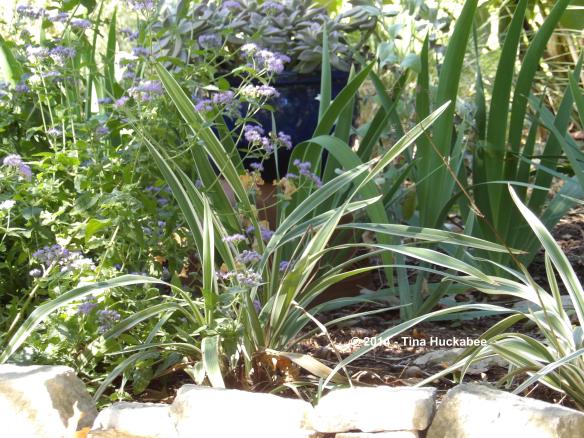
I love the wide, grass-like foliage of Dianella with its snazzy white stripes down the sides.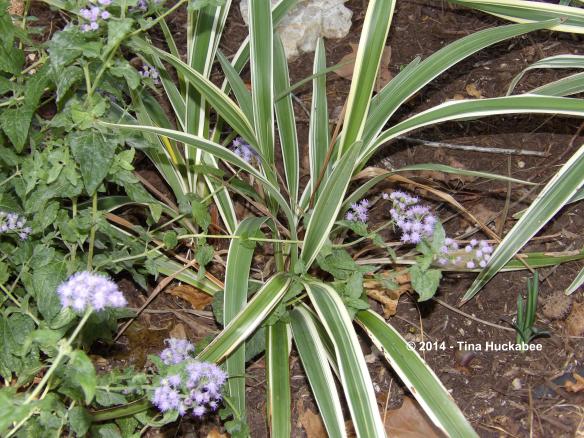
When a freeze was predicted this week, I covered the Dianella, though my concerns were unwarranted. Last winter, I covered all of my Dianella each time the temperature sank into the ’20s, especially for extended periods. They soldiered through winter like the garden champs they are and thrived in our long, hot summer. Dianella nicely combine with Iris and Soft-leaf Yucca straps,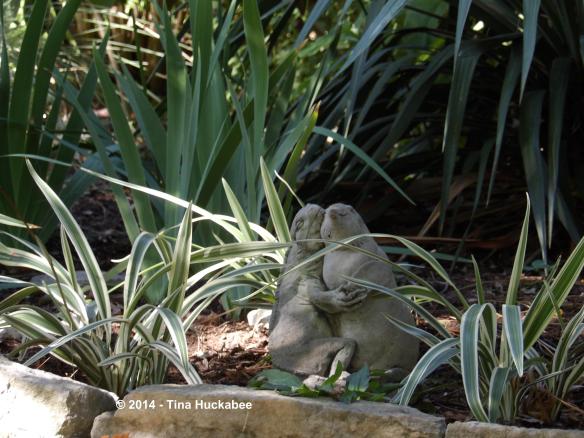
…as well as with these snuggly Love-Critters.
Ghost Plant is unkillable: it goes for months without water, isn’t fazed by freezes (or at least mine haven’t been), can re-grow if a stem is broken.
My kinda plant.
Maiden Grass, Miscanthus sinensis ‘Adagio’ is in its glory now.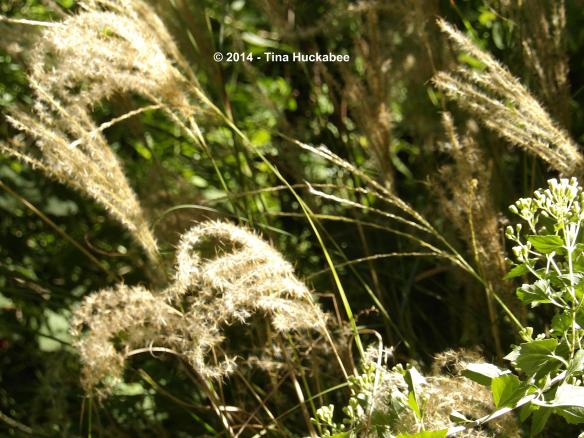
The beautiful seed heads reflect the sun as it briefly peeked through our mostly cloudy week.
Toasty-seeded Inland Sea Oats, Chasmanthium latifolium and the green swath of Cast Iron Plant, Aspidistra elatior are a striking pair.
Added to this scene is Purple Heart, Setcreasea pallida, which dramatizes that story a bit.
Big Muhly, Muhlenbergia lindheimeri and Soft-leaf Yucca, Yucca recurvifolia are cool weather troopers.
Graceful while also lending structure to the garden, these two are beautiful companions throughout the year, hot or cold.
I took this photo of evergreen Yarrow, Achillea millefolium and Chile Pequin, Capsicum annuum var. glabriusculum, just before what was supposed to be a freezing night. I figured the fruits wouldn’t survive the plunging temperatures and wanted to record them for posterity.
I’m happy to report that the fruits are still available for dining by interested birds.
I love the twisty-curvy foliage of Corkscrew Rush, Juncus effusus spiralis, silhouetted over a pair of Mexican Feathergrass, Nassella tenuissima.
Finally, the leaf change is beginning on my Red Oak, Quercus coccinea.
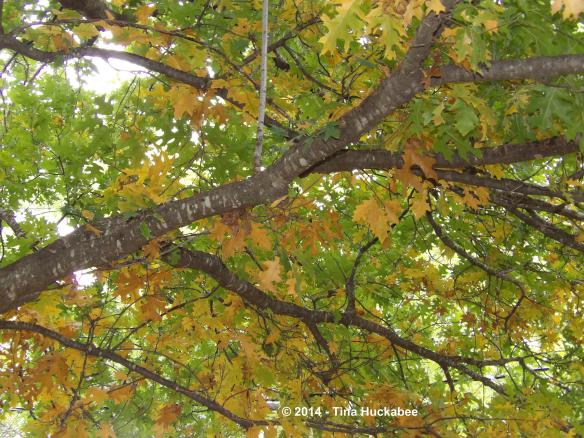 Here in Central Texas, our tree foliage color change occurs later than that of our northern kin, but beautiful and appropriate for our climate and region. There will be more of this in the weeks to come.
Here in Central Texas, our tree foliage color change occurs later than that of our northern kin, but beautiful and appropriate for our climate and region. There will be more of this in the weeks to come.
Digging hosts Foliage Follow-Up–drop in for a look at November foliage fanfare.
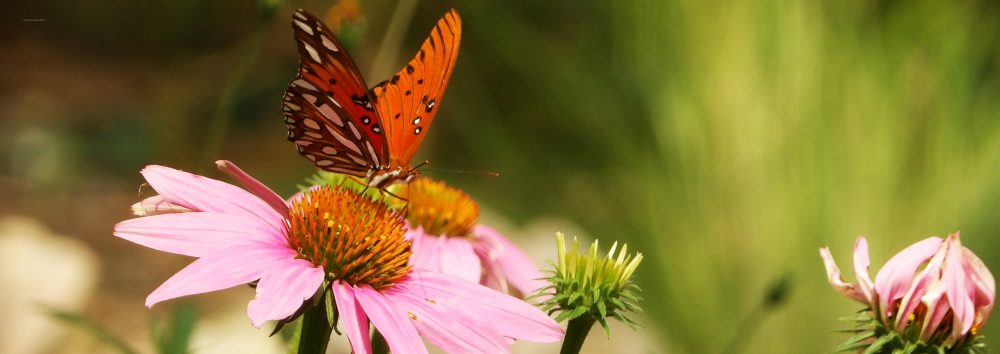

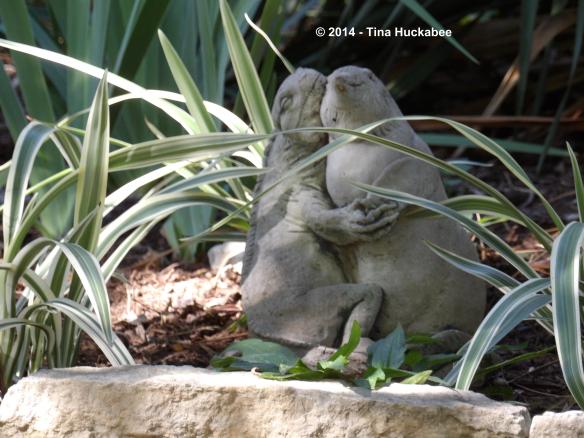


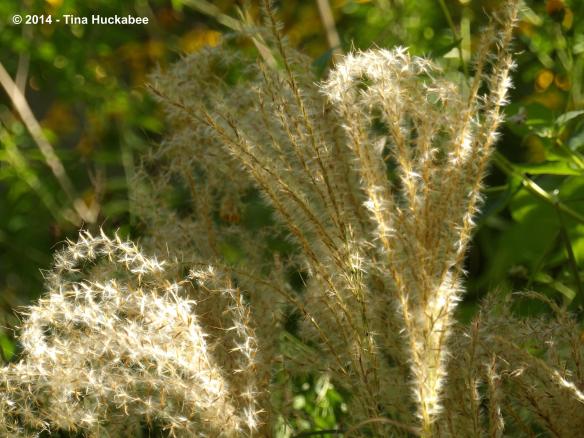
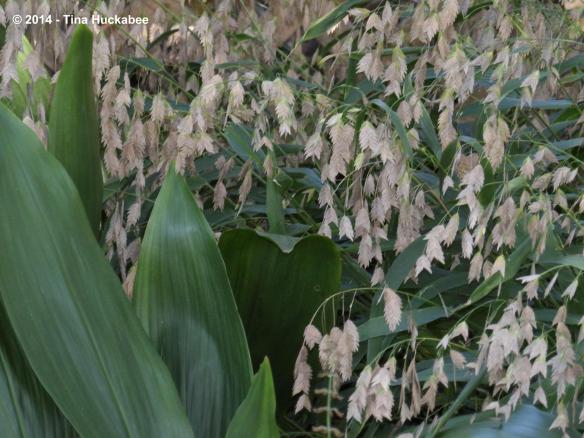

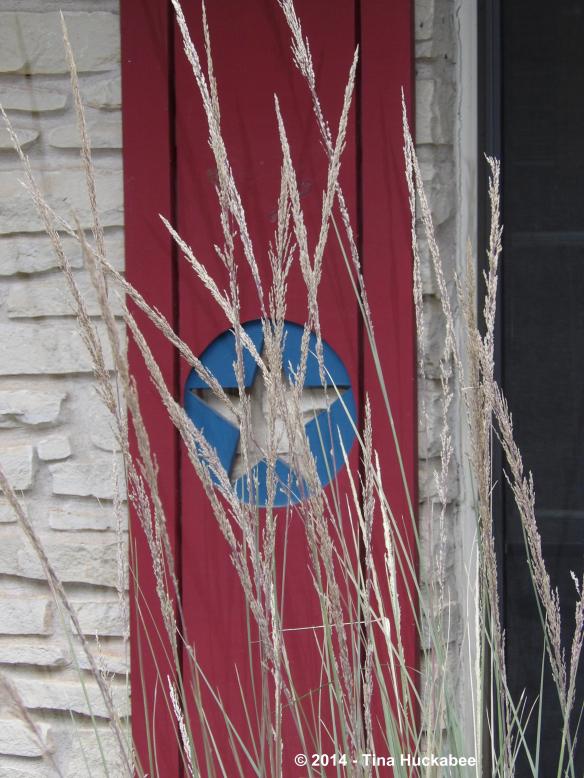
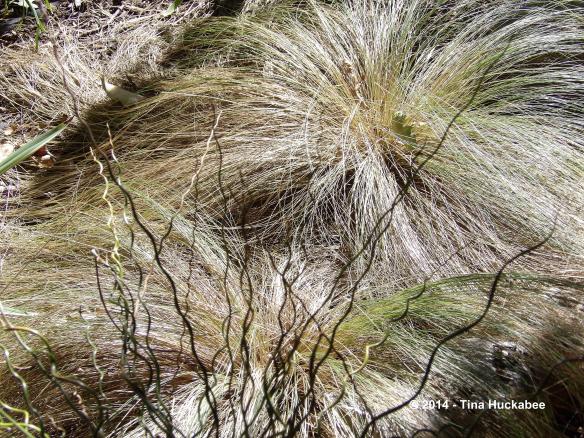
The unkillable ghost plant sure looks good in the cobalt pot. I like succulents that don’t need babying in winter. Fun to see how many of the same plants we featured. Love the photo with the shutters and Big Muhly.
LikeLike
Succulents are great container plants, especially for me! I like that shutter too, with the plumes of the muhly–very Texan!
LikeLike
Beautiful! I love the combo of leaf shapes around your snuggly guys. And the snuggly guys, too …
LikeLike
Thanks–I like those snuggle guys as well. They migrate around the gardens, but seem especially happy there.
LikeLike
Nice presentation. Graptopetalum is one of my fav plants to play with. When I can’t think of anything else, I make a whole new flat of rosettes waiting for inspiration.
LikeLike
The Ghost-Graptopetalum is a tough one. I don’t use it as much as I should either. The color is gorgeous with red or any blue. Hmmm, more to think about….
LikeLike
Love the Sea Oats! They’re new to my garden this year, and they look great in all seasons, don’t they? I like the way you showed the great combinations here. The Corkscrew Rush and Mexican Feather Grass combination is stunning. And the snuggling love critters look like the people around here–it’s been so cold!
LikeLike
I love sea oats. They’re so graceful, elegant and interesting year ’round. I also liked that shot of the Rush and the Mexican feathergrass–it turned out even better than I though it would.
Ha! It’s good that people are snuggling–always a plus, hot or cold!
LikeLike
Your sea oats/cast iron plant combo is intriguing. I like the way Lee/The Grackle grows it with Turk’s cap too. Really, what shade plant doesn’t it look good with? It’s the little black dress of the fall garden. 🙂 My garden, too, escaped any freeze damage last week. I think all the trees must have sheltered things a bit. I’m looking forward to the changing fall foliage too.
LikeLike
Little black dress–that’s good. I like both those plants–and Turk’s cap too. It’s supposed to freeze tonight; I’ll believe when I feel it. (And the basil is wilted.)
LikeLike
I’m running a little bit colder than you are apparently, but so far most of the plants remaining outside are shaking off their first few hours of freezing and under. I love that corkscrew rush – now that would be striking in a dried arrangement. And like you, I’m thinking I underuse ghost plant. I’m going out later today to clip a couple of rosettes to harden off and repot for future projects. Go-Go Ghost Plants!
LikeLike
I imagine you are a bit colder where you live. I appreciate the heat island goings on this time of year (maybe not so much in August?), but I don’t want to be complacent, my gardens will freeze–eventually.
I agree, the ghost plant needs more space in more pots–it’s just too easy and attractive.
LikeLike
I am just learning about Southern gardening after decades of gardening in Zone 5. I am so happy to learn that I don’t have to cover the dianella. They are one of the few plants I ventured to put in the garden in this new HOT and coastal garden of mine!
LikeLike
Hi Jayne, thanks for stopping by. Welcome to perspiration! The only caveat with dianella is if it ever gets REALLY cold (20’s for a day or two–yeah, that’s REALLY cold to us :)), you should cover them. When they have freeze damage,they get little rusty spots and the straps will turn brown. I’ve never completely lost a plant, but sometimes, after pruning freeze-damage, dianella can be slow to return.
LikeLike